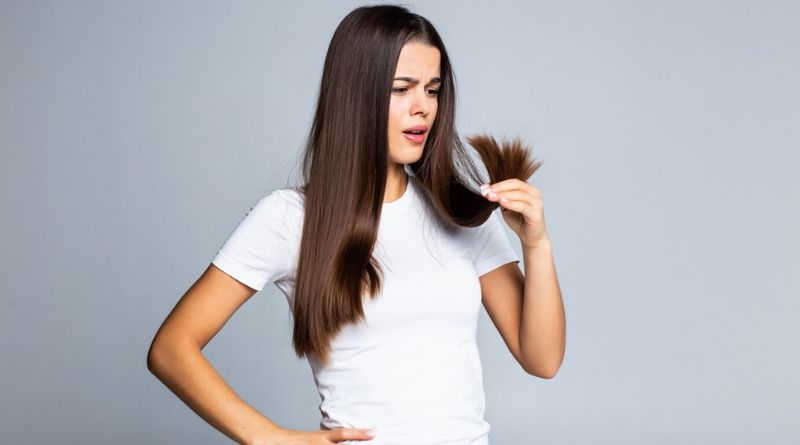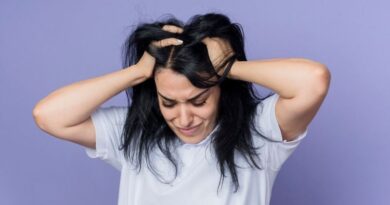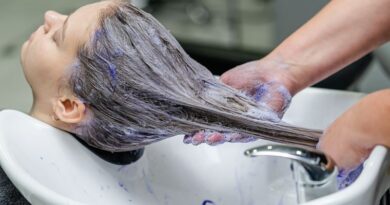How To Tell If Your Hair Needs Protein – In the pursuit of luscious locks, understanding your hair’s needs is paramount. Protein plays a pivotal role in maintaining hair health, contributing to its strength and resilience. This guide aims to help you decipher whether your hair is craving protein replenishment. From the fundamental structure of hair to the signs indicating a protein imbalance, we’ll delve into the intricacies.
Dryness, brittleness, and excessive breakage are red flags, but so is your hair’s elasticity, which we’ll explore through a simple test. We’ll navigate the realms of porosity, chemical damage, and heat-related stress, shedding light on the subtle cues your hair may be giving. As we embark on this journey, you’ll gain insights into striking the delicate balance between protein and moisture, armed with knowledge to revive and maintain your hair’s natural vibrancy.
Importance of Hair Health
Hair health is not merely an aesthetic concern; it is a reflection of overall well-being and self-care. Beyond serving as a canvas for personal style, your hair’s condition can offer insights into your physical health and lifestyle.
Healthy hair is a symbol of vitality, suggesting a balanced diet, hydration, and proper self-care practices. Furthermore, the state of your hair can impact your confidence and self-esteem, influencing your overall mental well-being. Beyond the surface, maintaining hair health involves understanding and addressing internal and external factors that affect its condition.
As a dynamic and visible part of your identity, investing in the health of your hair contributes not only to a polished appearance but also to a holistic sense of self-assurance and vitality.
Also, Read – How long does semi-permanent hair dye last
Signs Your Hair Needs Protein
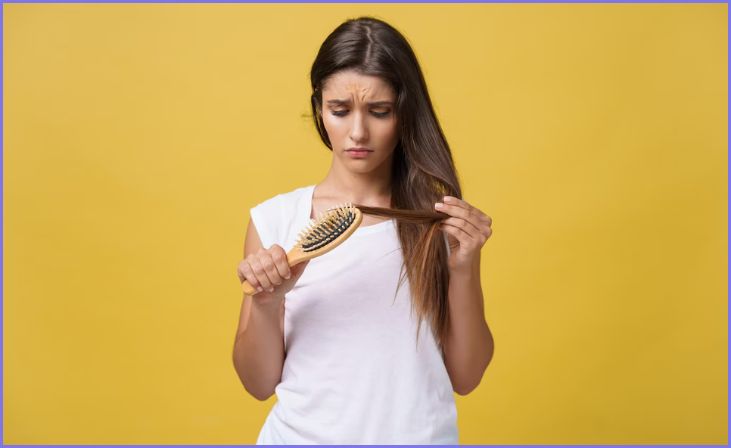
Dryness and Brittle Texture:
- Symptoms: If your hair feels excessively dry, lacks moisture, and exhibits a brittle texture, it could indicate a protein deficiency.
- Explanation: Proteins are essential for maintaining the structure of the hair shaft. When protein levels are low, the cuticle scales that protect the hair may lift, leading to increased moisture loss and a dry, brittle feel.
Excessive Breakage:
- Symptoms: Frequent breakage, especially at the ends, is a clear sign of weakened hair structure. If your hair breaks easily, even with minimal stress, it may lack the necessary protein support.
- Explanation: Proteins contribute to the tensile strength of the hair. When this strength is compromised, hair becomes more prone to breakage, resulting in split ends and overall fragility.
Elasticity Test:
- Symptoms: Poor elasticity is a key indicator of protein deficiency. If your hair doesn’t stretch and return to its original state when wet, it may lack the necessary proteins for flexibility.
- Explanation: Proteins like keratin provide elasticity to hair strands. Conducting a simple elasticity test involves gently stretching a wet strand of hair; if it breaks easily or doesn’t regain its shape, protein levels may be insufficient.
High Porosity:
- Symptoms: High porosity means your hair absorbs and loses moisture quickly. If your hair feels excessively porous and prone to frizz, it may indicate a lack of protein.
- Explanation: Proteins help fill gaps in the hair cuticle, and low levels can lead to raised cuticles, resulting in high porosity. This compromises the hair’s ability to retain moisture.
Chemical and Heat Damage:
- Symptoms: If your hair has undergone chemical treatments or frequent heat styling and shows signs of damage such as split ends, thinning, or a rough texture, protein loss may be a contributing factor.
- Explanation: Chemical processes and heat styling can strip the hair of its natural proteins. Insufficient protein levels make the hair more susceptible to damage from these external factors.
Identifying these signs empowers you to tailor your hair care routine, incorporating protein treatments as needed to restore and maintain optimal hair health.
Also, Read – How often should I use rice water on my hair
Guide on Protein treatment for Hair in Salon
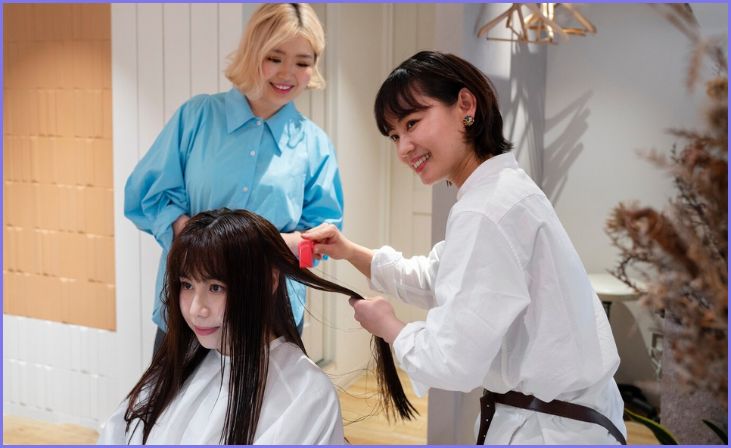
A protein treatment for hair is a salon service that helps strengthen and nourish the hair, particularly beneficial for damaged or weakened hair. Protein treatments can be especially useful for those with chemically treated hair, such as those who regularly color, perm, or straighten their hair. Here’s a guide on how a typical protein treatment for hair in a salon might be conducted:
Consultation:
- Begin with a thorough consultation to understand the client’s hair history, current condition, and any specific concerns or goals they have.
- Identify any chemical treatments, heat styling, or other factors that may have contributed to the hair damage.
Hair Analysis:
- Conduct a hair analysis to assess the porosity, elasticity, and overall condition of the hair.
- This analysis helps determine the type and intensity of the protein treatment needed.
Selection of Protein Treatment:
- Choose an appropriate protein treatment based on the hair’s specific needs.
- Some common protein treatments include keratin treatments, amino acid treatments, and collagen-infused treatments.
Preparation:
- Shampoo the client’s hair to remove any styling products, oils, or debris.
- Towel-dry the hair gently to remove excess water.
Application:
- Divide the hair into sections for even application.
- Apply the protein treatment product evenly, ensuring full coverage from roots to ends.
- Use a wide-tooth comb to distribute the product and detangle the hair.
Processing Time:
- Allow the protein treatment to process, following the product’s recommended processing time.
- Some treatments may require heat activation or the use of a steamer to enhance penetration.
Rinsing:
- Rinse the hair thoroughly to remove the protein treatment.
- Some treatments may require a neutralizing step, so follow the product instructions carefully.
Conditioning:
- Apply a deep conditioning treatment to restore moisture balance and further enhance the results of the protein treatment.
- Leave the conditioner on for the recommended time.
Final Rinse and Style:
- Rinse out the conditioner, and gently towel-dry the hair.
- Proceed with the desired styling, whether it’s blow-drying, straightening, or allowing the hair to air-dry.
Aftercare Advice:
- Provide the client with aftercare instructions, including recommendations for at-home maintenance, such as using sulfate-free shampoos and avoiding excessive heat styling.
Tips:
- Overuse of protein treatments can lead to hair becoming brittle, so it’s crucial to strike a balance between protein and moisture.
- Customize the treatment based on the client’s hair type and specific concerns.
Conclusion (How To Tell If Your Hair Needs Protein)
In conclusion, maintaining the health of your hair involves a delicate balance of protein and moisture. By recognizing the signs of protein deficiency and incorporating targeted treatments, you can revitalize your hair’s strength and resilience. Whether through protein-rich products, DIY treatments, or professional interventions, a personalized approach is key.
Regular maintenance, a well-rounded diet, and a thoughtful combination of protein and moisture-based care contribute to vibrant and healthy hair. Empower yourself with the knowledge to nurture your hair, ensuring it not only looks great but also reflects your overall well-being.
FAQs
The frequency depends on your hair’s condition. Generally, once every 4-6 weeks is a good starting point. Adjust based on your hair’s response, aiming for a balance between protein and moisture treatments.
While a balanced diet is crucial, external protein treatments provide targeted benefits. Combining both dietary protein and topical treatments yields comprehensive results.
Yes, excessive protein can lead to stiffness and breakage. Pay attention to your hair’s response and balance protein treatments with moisturizing ones to avoid overloading.

